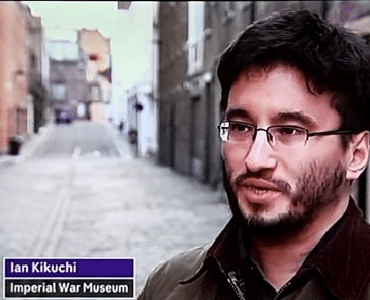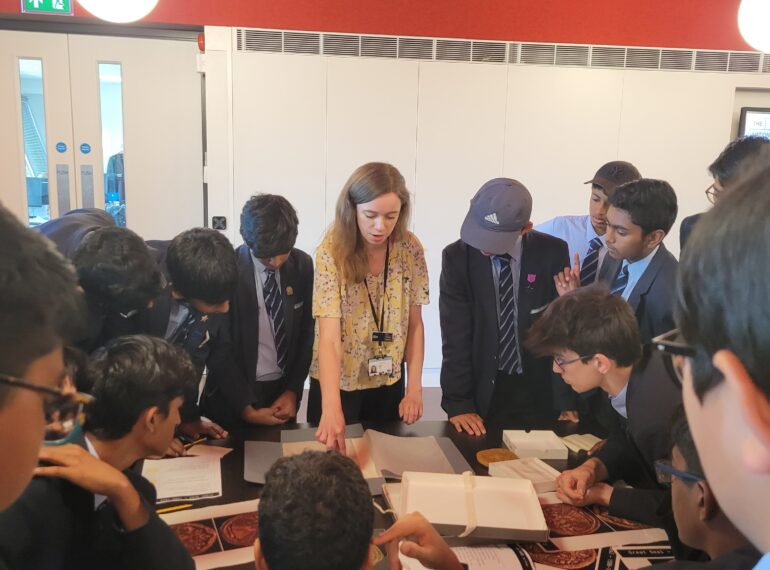
Twenty-three boys whose work was chosen as the best in the QE 450th anniversary research project were treated to a rare look at one of the nation’s most treasured documents on a trip to the National Archives.
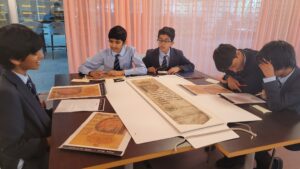 Among the artefacts viewed by the group during their visit to Kew was the actual letter – known as the ‘Tide Letter’ – written by the future Queen Elizabeth I, founder of Queen Elizabeth’s School, as she battled for survival following her arrest in 1554.
Among the artefacts viewed by the group during their visit to Kew was the actual letter – known as the ‘Tide Letter’ – written by the future Queen Elizabeth I, founder of Queen Elizabeth’s School, as she battled for survival following her arrest in 1554.
Jenni Blackford, Curator of QE Collections and Head of Library Services, said: “It was amazing to see such fabulous documents close up and it was a testament to our students’ conduct, interest and behaviour that they brought the Tide Letter out to show them at the end of the session.”
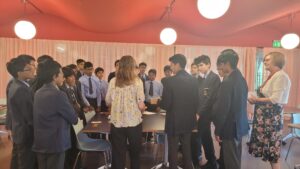 The visit was a reward for the boys who submitted the best entries to Project 1573. This involved small groups of boys being given three primary sources relating to a particular aspect of QE’s history and then asked to produce a three-minute presentation after accessing QE Collections – the School’s online archive – and other archival materials.
The visit was a reward for the boys who submitted the best entries to Project 1573. This involved small groups of boys being given three primary sources relating to a particular aspect of QE’s history and then asked to produce a three-minute presentation after accessing QE Collections – the School’s online archive – and other archival materials.
The winners were:
- Navieeneish Kirubaharan, Param Kapadia, Aarnav Mahajan and Advay Zore, all from Year 8 Pearce form, who researched Timothy Edwards, Headmaster 1961–1983
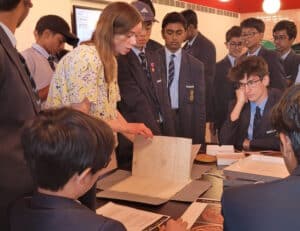 Kelvin Chen, Ethan Yao, Jonas Dawit and Rishi Sen, also of Year 8 Pearce, researching E W Harrison, a long-serving teacher who retired in 1950 and is one of the two unrelated people after whom the Harrisons’ House is named
Kelvin Chen, Ethan Yao, Jonas Dawit and Rishi Sen, also of Year 8 Pearce, researching E W Harrison, a long-serving teacher who retired in 1950 and is one of the two unrelated people after whom the Harrisons’ House is named- Shravanth Sadheesh, Pranav Nayak, Arya Ratnakaram and Sriram Muthukumaran, from Year 8, Stapylton, who looked into QE’s 350th anniversary celebrations in 1923
- Snehal Das, Samir Cheema and Ozgan Cakir, of Year 9, Stapylton, who researched QE becoming a grant-maintained school in 1989, giving it new freedoms to govern its own affairs
- Keeyan Shah, Alex Stack, Shlok Gajjar and Pranith Turaga, also of Year 9, Stapylton, looked into the foundation of the School
- Aahan Shah, Abhinav Sandeep, Jack Tan and Tunishq Mitra, of the Year 9 Broughton form, who investigated the history of Eton Fives at the School.
They saw the Tide Letter, which was written by Elizabeth to her half-sister, Queen Mary I, when the princess was arrested following Wyatt’s Rebellion, an attempt to overthrow the queen, in 1554. Mary gave orders for Elizabeth to be taken to the Tower of London.
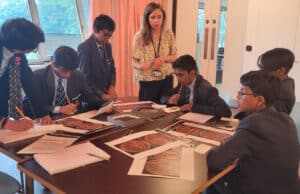 “The students were able to see the neat handwriting at the start of the letter become larger and messier as she was likely made to hurry by those waiting to escort her to the Tower. Fearing her enemies might alter the letter, Elizabeth struck lines through the blank space above her signature,” said Mrs Blackford.
“The students were able to see the neat handwriting at the start of the letter become larger and messier as she was likely made to hurry by those waiting to escort her to the Tower. Fearing her enemies might alter the letter, Elizabeth struck lines through the blank space above her signature,” said Mrs Blackford.
“It is called the Tide Letter because it is believed Elizabeth deliberately wrote the letter to buy time so that the daylight low tide that enabled boats to pass safely through the narrow arches of London Bridge would have turned and she would avoid being taken to the Tower for an additional day.”
Eloquently protesting her innocence, the future queen finishes the letter: “Your hignes most faithful subject that hathe bine from the beginninge, and wylbe to my ende. Elizabeth.”
Her stratagem was successful: she was not taken to the Tower until the following day. Elizabeth was eventually released and then succeeded to the throne on Mary’s death four years later, in 1558.
The Year 8 and Year 9 boys saw a variety of later documents from Elizabeth’s reign, including letters, speeches, Plea Rolls (parchment court records) and the queen’s second Great Seal.
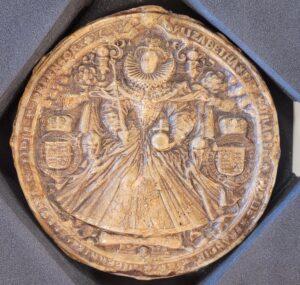 QE’s founding Royal Charter of 1573 was authorised with Queen Elizabeth’s first seal. This, however, wore out during her long reign, and, Ms Blackford said, the boys enjoyed finding out about its replacement: “It is noticeably more elaborate, as Elizabeth had started to closely monitor her image.”
QE’s founding Royal Charter of 1573 was authorised with Queen Elizabeth’s first seal. This, however, wore out during her long reign, and, Ms Blackford said, the boys enjoyed finding out about its replacement: “It is noticeably more elaborate, as Elizabeth had started to closely monitor her image.”
The boys also learned about how the National Archives came into existence, hearing how in the 1830s, civil servant Henry Cole submitted to the Government a dead mummified rat with a stomach full of chewed documents among his evidence of the unsuitability of the premises where public records were then being stored.
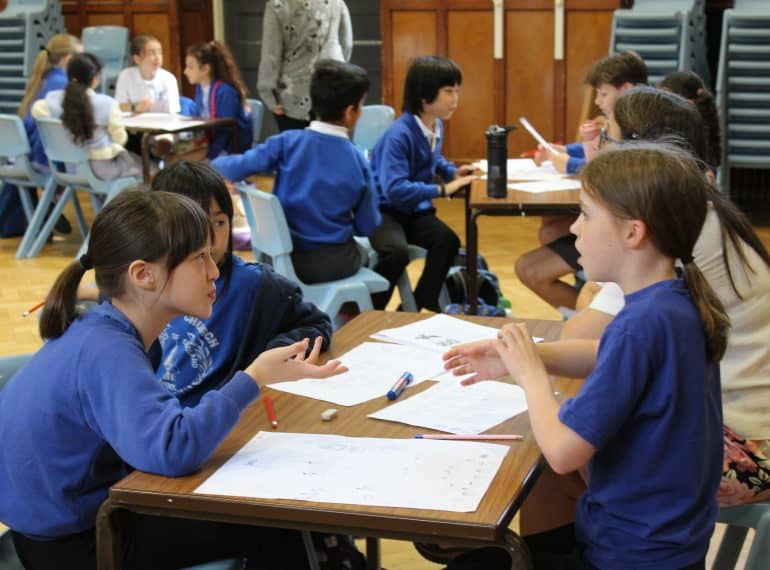
 The events, which are part of QE’s partnerships work with the local community, are aimed at giving Year 5 girls and boys an early taste of secondary school education.
The events, which are part of QE’s partnerships work with the local community, are aimed at giving Year 5 girls and boys an early taste of secondary school education.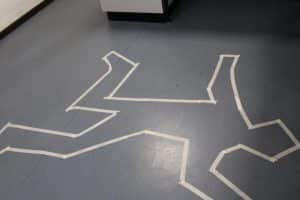 The first of the three days was the ever-popular Primary Forensics Workshop. The visitors were tasked with completing a number of experiments and analyses to work out who had murdered the Headmaster!
The first of the three days was the ever-popular Primary Forensics Workshop. The visitors were tasked with completing a number of experiments and analyses to work out who had murdered the Headmaster! Boys from Year 12 helped staff run this workshop, engaging with the children at each station.
Boys from Year 12 helped staff run this workshop, engaging with the children at each station. Firstly, teams were given the challenge of designing a castle on paper. They had to base their design on a certain set of criteria and follow a budget, requiring them to decide which features they wanted to prioritise.
Firstly, teams were given the challenge of designing a castle on paper. They had to base their design on a certain set of criteria and follow a budget, requiring them to decide which features they wanted to prioritise.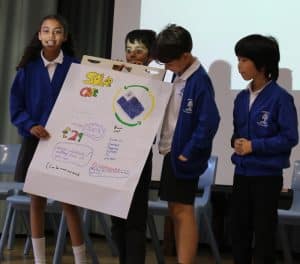 There was then a Sustainability Challenge run jointly by Geography and Economics. The children had to work in groups and devise a sustainable product. They designed their product, chose a logo and decided on their target market. Then each group presented to the other children in attendance. Among the ideas generated were: a mobile phone where the case is a solar panel and charges the phone, and a ‘plastic’ bottle where the bottle itself is biodegradable.
There was then a Sustainability Challenge run jointly by Geography and Economics. The children had to work in groups and devise a sustainable product. They designed their product, chose a logo and decided on their target market. Then each group presented to the other children in attendance. Among the ideas generated were: a mobile phone where the case is a solar panel and charges the phone, and a ‘plastic’ bottle where the bottle itself is biodegradable.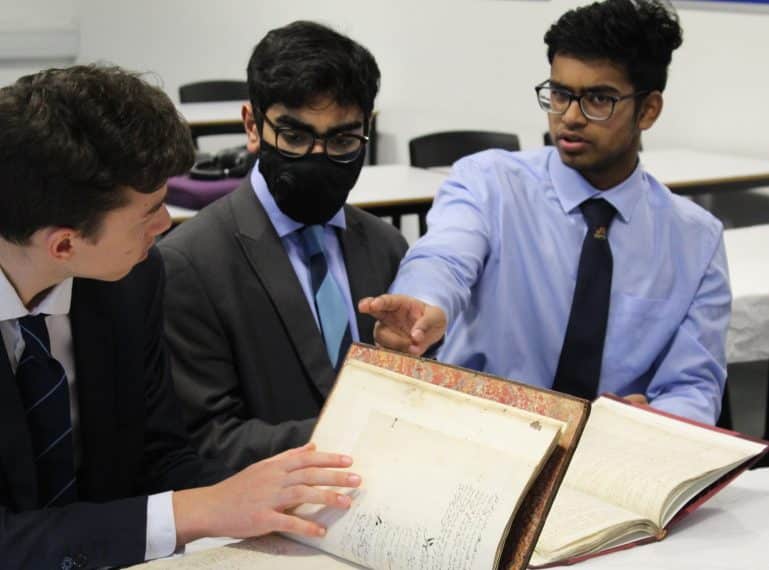
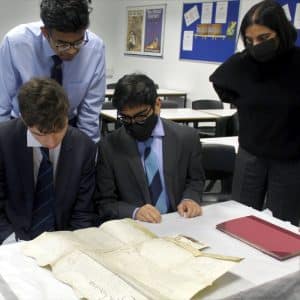 English teacher Kanak Shah has brought together a group of dedicated Year 12 boys and trained them in palaeography – the study of ancient and pre-modern manuscripts.
English teacher Kanak Shah has brought together a group of dedicated Year 12 boys and trained them in palaeography – the study of ancient and pre-modern manuscripts.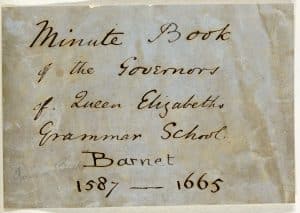 “The earliest documents present an interesting challenge as they were written before the standardisation of handwriting, and so require careful decoding,” said Ms Shah.
“The earliest documents present an interesting challenge as they were written before the standardisation of handwriting, and so require careful decoding,” said Ms Shah.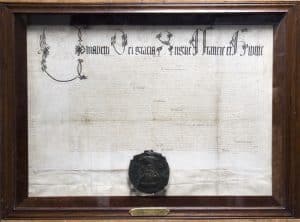 It is not clear who made the the Barnet Museum transcription, which was completed some time prior to 1931. The preface to the museum’s collection of QE translations and transcriptions was written in May 1931 by Cecil L Tripp, author of A History of Queen Elizabeth’s Grammar School, published 1935.
It is not clear who made the the Barnet Museum transcription, which was completed some time prior to 1931. The preface to the museum’s collection of QE translations and transcriptions was written in May 1931 by Cecil L Tripp, author of A History of Queen Elizabeth’s Grammar School, published 1935.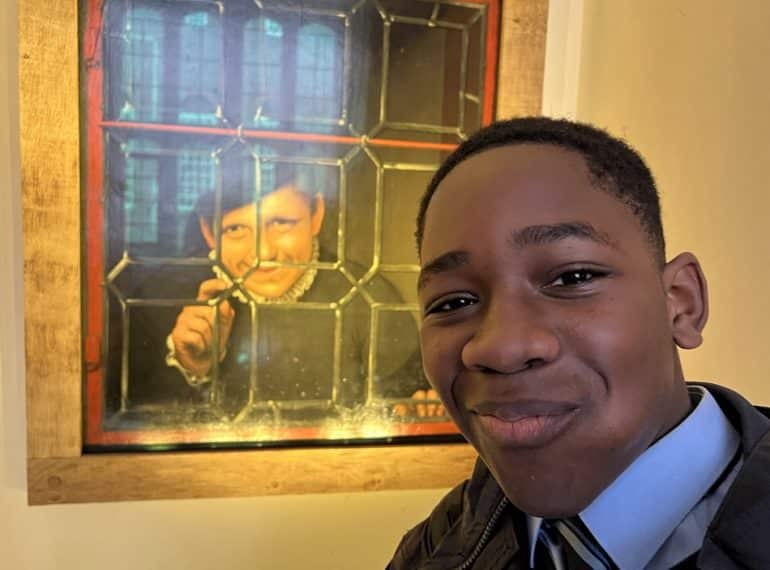
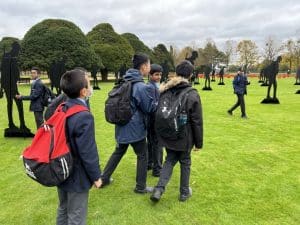 At the palace, the boys learned about Tudor life and saw at first-hand evidence of the School’s own links with the Tudor monarchy. They also had the opportunity to see a special exhibition and art installation – on for this month only – featuring silhouetted figures of Sikh soldiers from the British Empire’s Indian Army.
At the palace, the boys learned about Tudor life and saw at first-hand evidence of the School’s own links with the Tudor monarchy. They also had the opportunity to see a special exhibition and art installation – on for this month only – featuring silhouetted figures of Sikh soldiers from the British Empire’s Indian Army.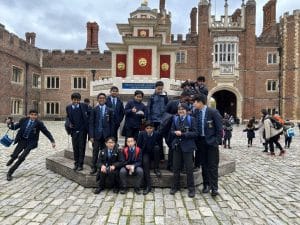 “Our pupils were fascinated, too, by the carved wooden ceilings in the Great Hall, picturing to themselves Henry VIII sitting under them and also, a few decades later, performances there by Shakespeare’s own theatre company.
“Our pupils were fascinated, too, by the carved wooden ceilings in the Great Hall, picturing to themselves Henry VIII sitting under them and also, a few decades later, performances there by Shakespeare’s own theatre company.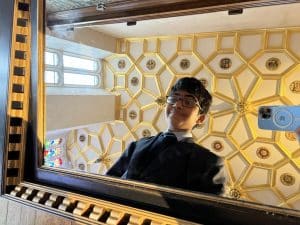 Braving the chilly weather, the QE groups enjoyed a walk around the park and formal gardens, during which they spied a herd of deer across a water feature to the rear of the palace.
Braving the chilly weather, the QE groups enjoyed a walk around the park and formal gardens, during which they spied a herd of deer across a water feature to the rear of the palace.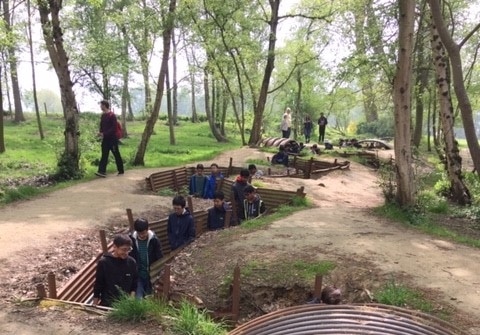
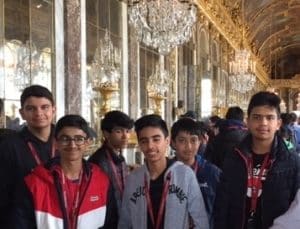 Head of History Helen MacGregor said the extra visit proved popular with the boys, for whom the whole trip was organised to fit in with Year 9’s History theme about the changing nature of warfare and to explore the links between World War I and World War II.
Head of History Helen MacGregor said the extra visit proved popular with the boys, for whom the whole trip was organised to fit in with Year 9’s History theme about the changing nature of warfare and to explore the links between World War I and World War II. This was followed by a tour of Tyne Cot Commonwealth War Graves Cemetery, where the boys searched out the names of Old Elizabethans who fought and died in the First World War. They included Jack Field, who had been the School Captain and was just 19 when he was killed. In the evening, the pupils watched the daily Menin Gate remembrance ceremony, which was first performed in 1928. Every evening, the busy road through the memorial arch is closed and The Last Post is played.
This was followed by a tour of Tyne Cot Commonwealth War Graves Cemetery, where the boys searched out the names of Old Elizabethans who fought and died in the First World War. They included Jack Field, who had been the School Captain and was just 19 when he was killed. In the evening, the pupils watched the daily Menin Gate remembrance ceremony, which was first performed in 1928. Every evening, the busy road through the memorial arch is closed and The Last Post is played. Miss MacGregor said: “The boys were clearly moved by the ceremony and took the time to remember the war dead, including the Sikh regiment who are commemorated there.”
Miss MacGregor said: “The boys were clearly moved by the ceremony and took the time to remember the war dead, including the Sikh regiment who are commemorated there.”